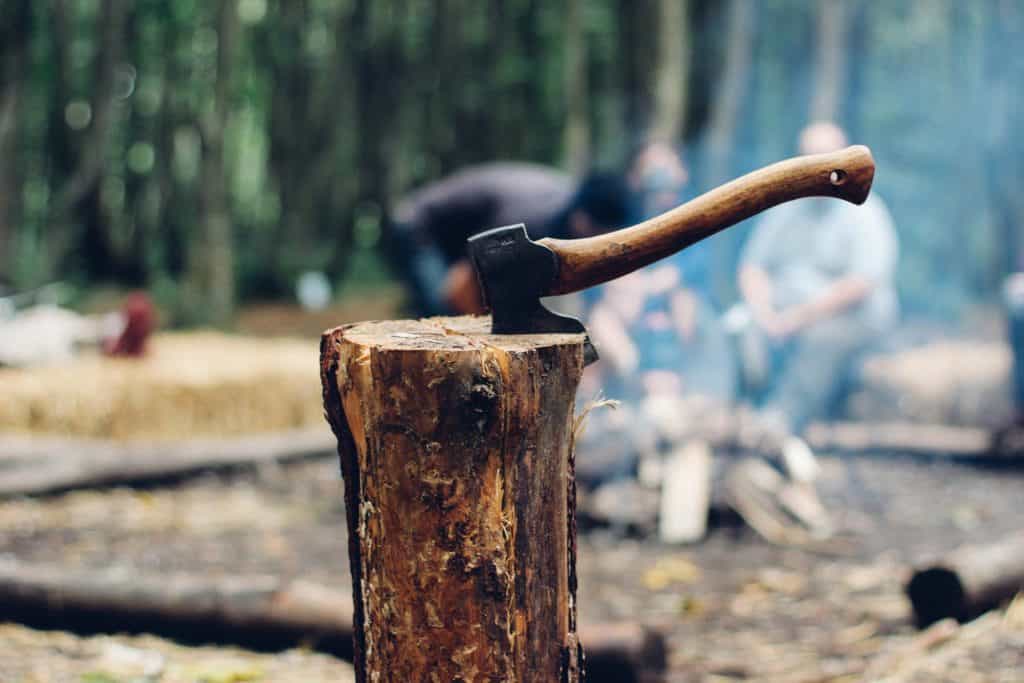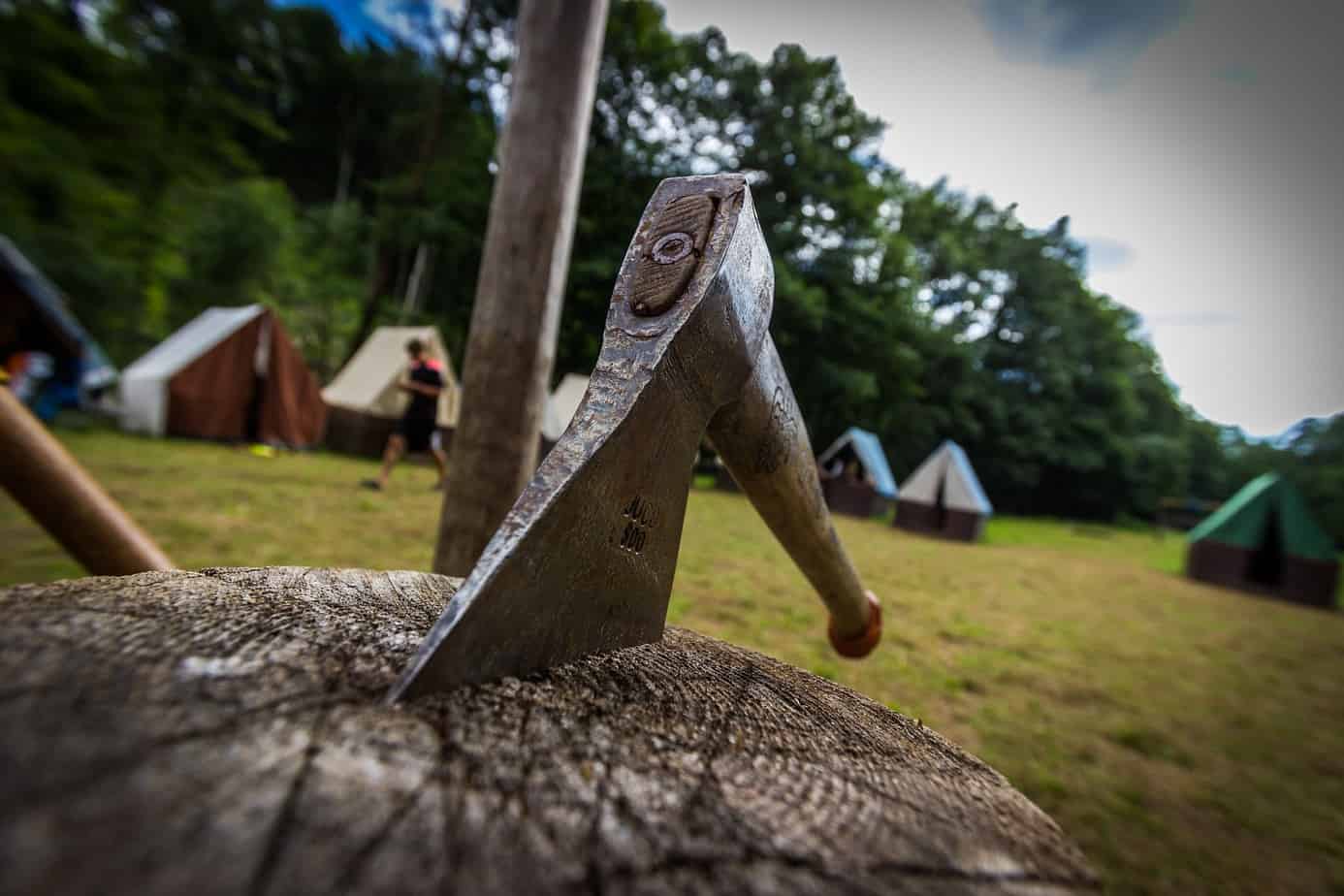Before we delve into which is better for camping, the axe or hatchet, let’s quickly go over the differences between the axe and hatchet.
Axe and Hatchet Basics
The axe (sometimes spelled ax) at its most basic form is an axe head with a handle commonly used to cut wood or harvest timber. The most common form of an axe typically has a long wooden handle with a steel double-beveled shallow wedge angle for cutting wood or a deeper wedge angle for splitting wood. However there numerous design variations and materials used to create an axe.
Whereas the hatchet sometime referred to as the hand axe has a much shorter handle designed to be used with one hand. In addition, typically hatchets have the typical double beveled cutting wedge angle on one side but also have a hammer head on the opposite side allowing for more uses and versatility.
So which is better axe vs hatchet? Well, unfortunately, there is no clear cut and dry answer. Each tool has its advantages and disadvantages depending on where and how you plan to use the tool.
Let’s talk about some advantages and disadvantages of the axe
Axe Advantages:
- Longer handle allows for more leverage, creating a more powerful strike.
- Typically larger and heavier axe head creates a more powerful strike.
- Two handed operation allows for easier use and more accurate aim.
Axe Disadvantages:
- Bulkier and heavier to store and travel with when not in use.
- Heavier axe head can create more fatigue overtime with continuous use.
- Difficult to manage in tight spaces.
- Now lets to take a look at the hatchet advantages and disadvantages.
Now lets take a look at some pros and cons of the hatchet.
Hatchet Advantages:
- Lighter and smaller size allows for easier storage and travel.
- Smaller handle and weight allows for one handed operation.
- Multi tool capability with axe head and hammer head.
- Easier to use in tight spaces.
Hatchet Disadvantages:
- Shorter handle allows for less leverage creating weaker striking power.
- Typically smaller and lighter axe head causes weaker striking power.
- Not well suited for larger volumes of cutting or log splitting due to smaller size and less powerful striking power.
From the advantages and disadvantages of the camping axe or camping hatchet, you can start to get an idea where one might be more advantageous over the other.
Two Chopping Scenarios Axe vs Hatchet
So let’s take a look at two scenarios to help you know whether the use of a camping axe or camping hatchet is more appropriate.
The camping axe is going to be the better choice if you need to cut and split a large amount of wood while at the campsite for a long duration stay. Our favorite axe is the Fiskars X27 Super Splitting Axe due to its durability, balanced power to weight ratio, and lifetime warranty.

Keep in mind though the axe is going to better suited for camping excursions that do not require a long hike to the campsite. Because of the axe’s bulky size and heavier weight, it does not make a good traveling companion while hiking.
On the flip side where the axe falls short the hatchet easily fills the gap. Due to the hatchet’s smaller and compact size as well as its multi tool capability, it makes it a great traveling companion while hiking and all-around go-to tool while at the campsite. Our favorite hatchet is the Gerber Bear Grylls Survival Hatchet because of its build quality, carbon steel construction, and secure no slip rubber grip.
Keep in mind though that because of its compact size and lighter weight that it does not excel at cutting or shopping large amounts of wood. For light and general use though it does a great job.
So whether you choose the camping axe or the camping hatchet due to your specific needs, they are both great additions to your outdoor camping gear.

